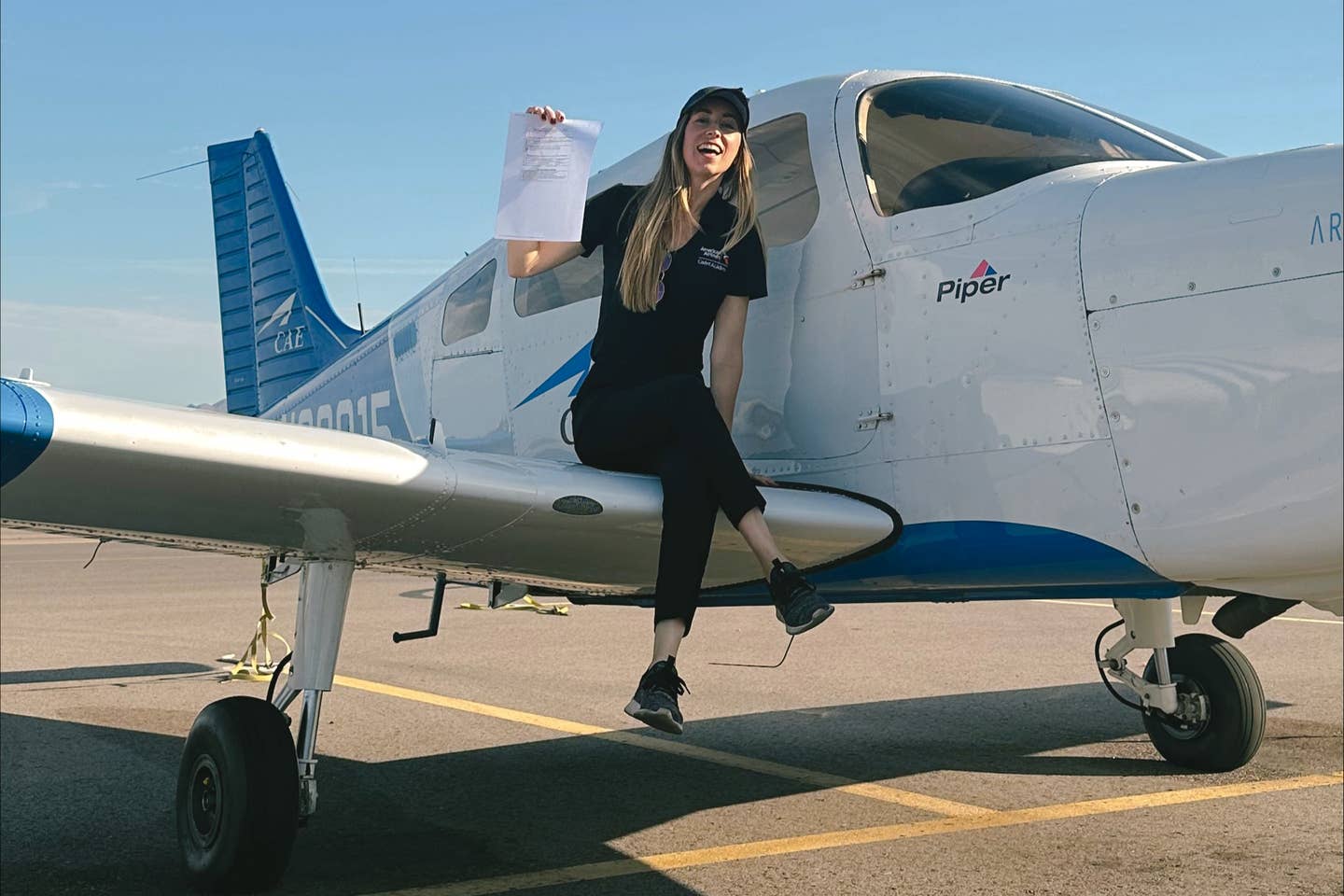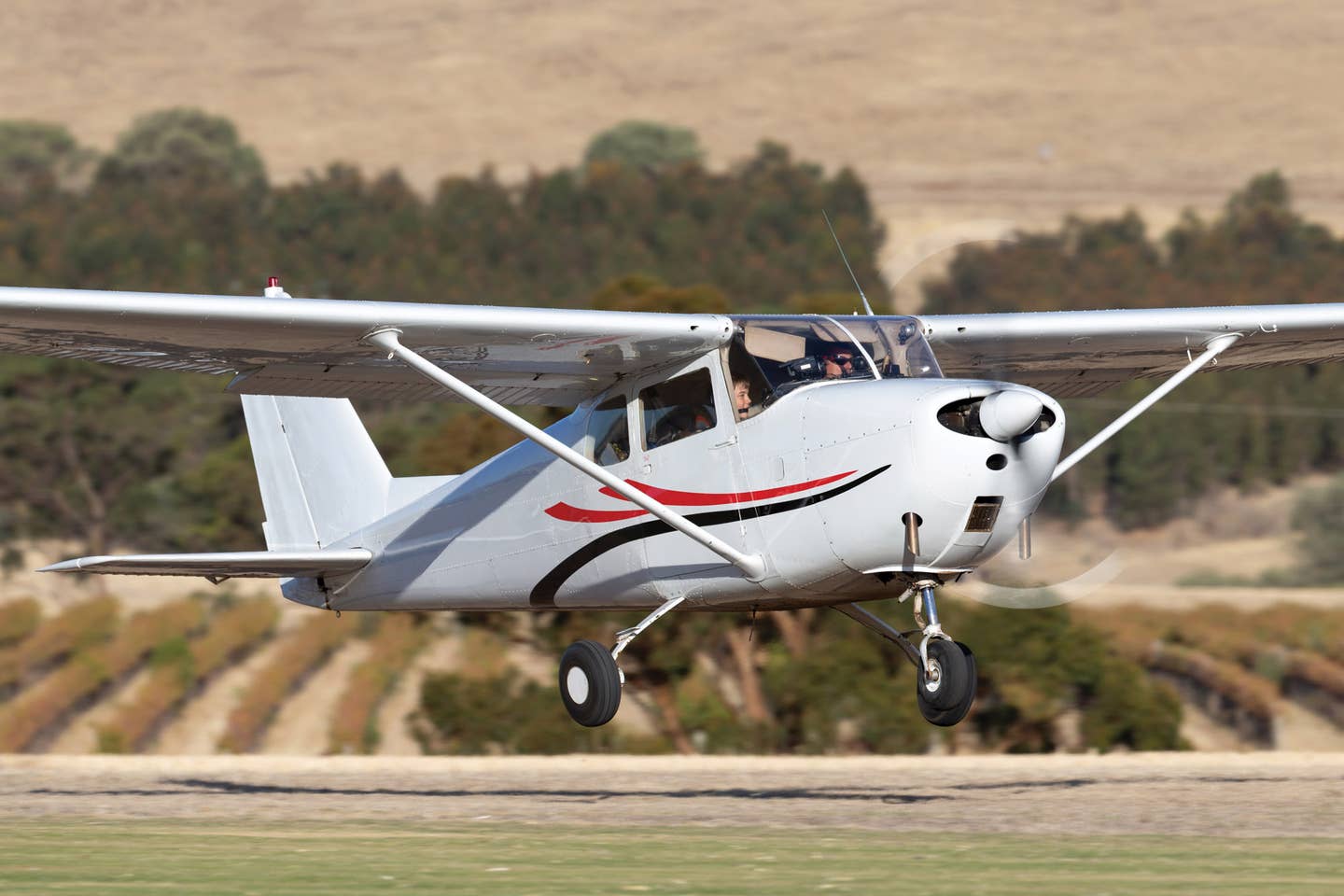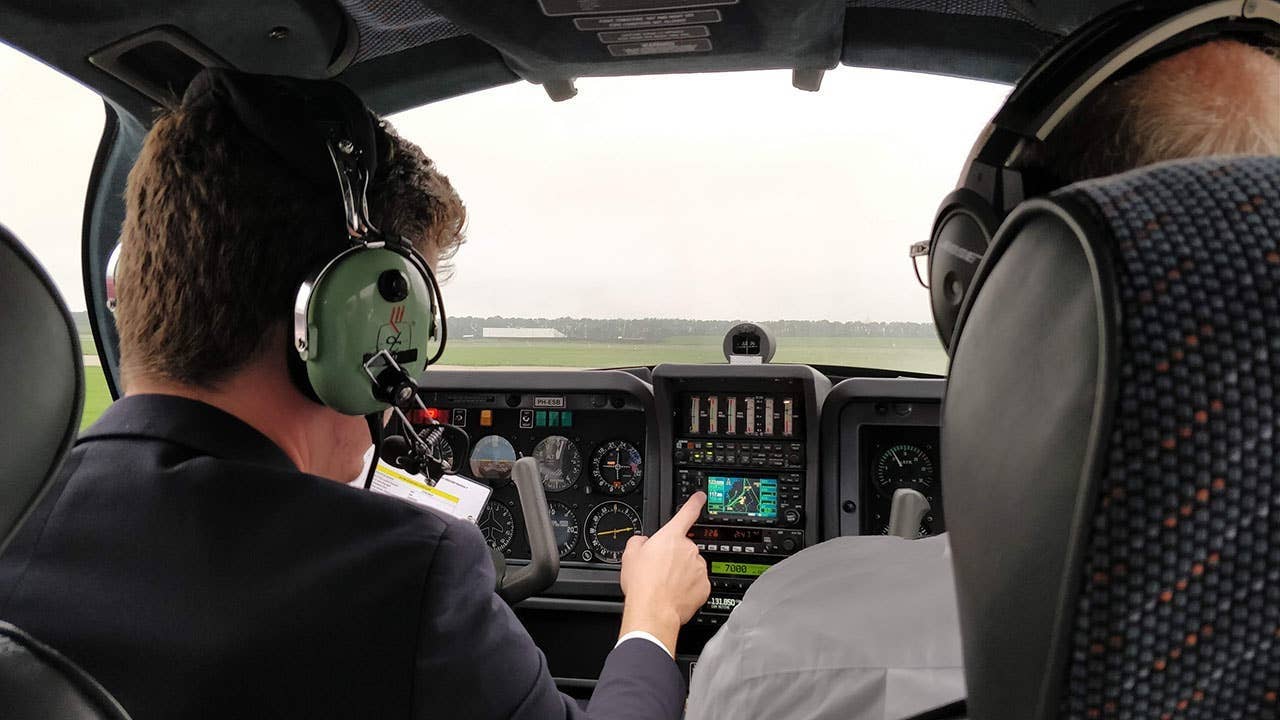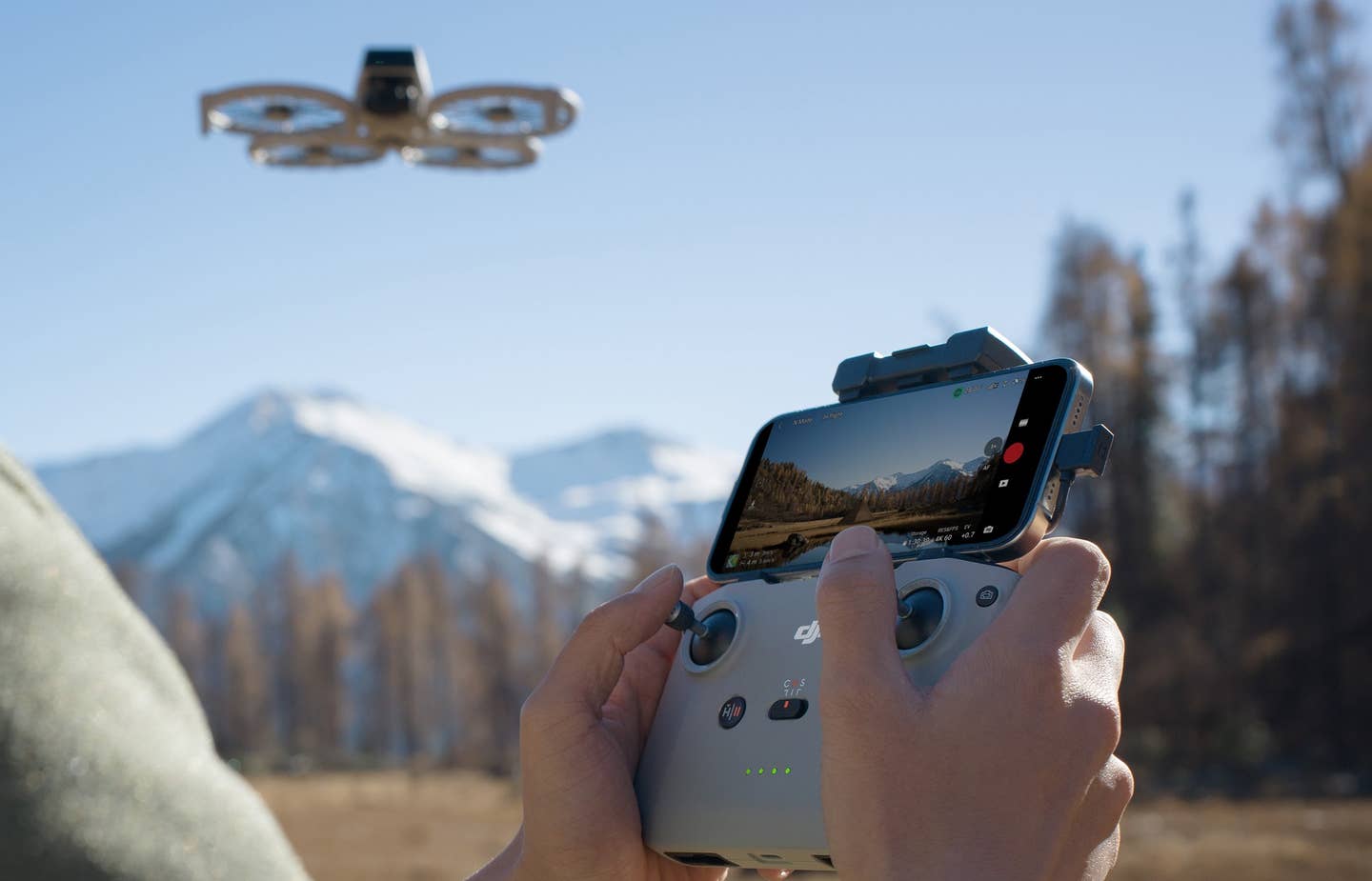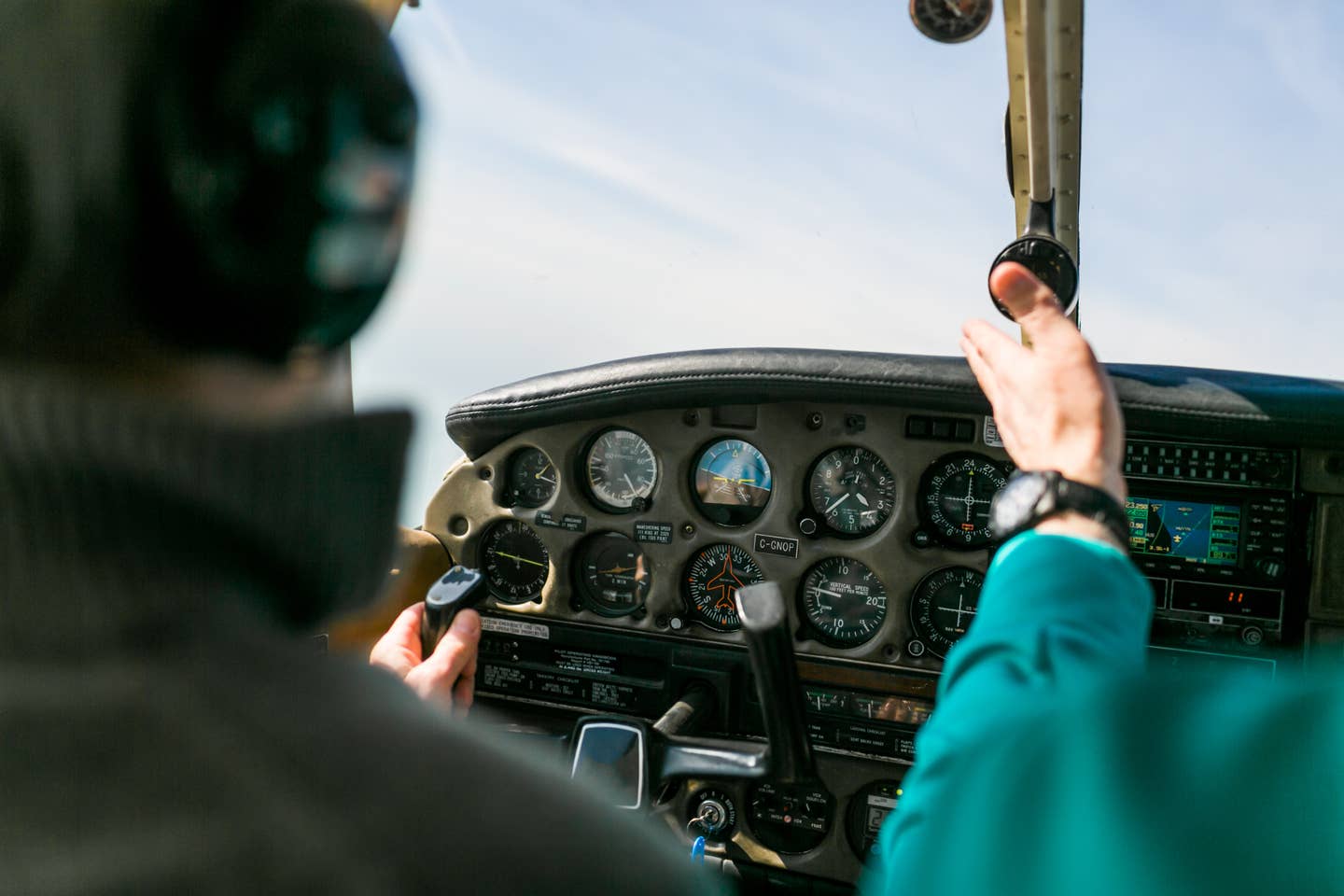How Low Should You Go?
Speed never looks so spectacular as when you’re close to the ground
 FAA regulations stipulate that there's no altitude limit when there's no risk to people or structures.But is it smart? |
The indiscretions of youth. It's all too easy to examine stupid pilot tricks and dismiss them as functions of immaturity. Back in the late '70s/early '80s, when I was younger and obviously much smarter, I was good friends with the world's most successful Mooney, Maule and Grumman American dealer, Joe Geiger of Performance Aircraft in Long Beach, Calif. In those days, Joe sold more 201s, 231s, Tigers, Cougars and Maules than anyone else.
I was editor of this magazine back then and had frequent need to travel to the manufacturers in Kansas, Texas, Georgia and Florida. Joe's aggressive sales record meant he was in need of new inventory every few days, so there was a steady stream of new airplanes flowing into Long Beach. Joe gave me carte blanche to pick up anything he needed delivered to California, and new Mooneys were my favorite rides. I probably delivered four-dozen 201s, 231s and 252s from the factory to Long Beach in those glorious days when general aviation was selling 10,000-17,000 airplanes a year.
Flying Mooneys across West Texas, New Mexico and Arizona provided the perfect opportunity (if not a reasonable excuse) to fly low. After you depart Kerrville, there's little in the way of people until El Paso, almost nothing between there and Phoenix, and finally, not much except desert between Phoenix and L.A. Accordingly, I used todrop down to 500 feet and enjoy the view. When there was nothing in sight but sagebrush and horny toads, I'd descend even lower. Though it was technically legal, it wasn't terribly smart. In the outback of the Southwest, I sometimes flew low enough that the only radar to track me belonged to the Highway Patrol.
I learned a lot flying low: checking the wind by watching cows face out of it or looking for the lee on calm water, examining circular irrigation in West Texas, discovering that what you assumed were sheep from 8,000 feet were actually turkeys from 500 feet, and looking down on crop dusters doing their amazing flying at five feet AGL or less.
I wasn't terribly smart in those days, and I did some things I probably wouldn't repeat now that I'm a lot older and still not very smart. Everyone knows the regulations regarding minimum altitude; 1,000 feet over a congested area, 500 feet above a sparsely populated zone and no limit when there's no risk to people or structures. (The FAA's specific wording is, "An altitude allowing, if a power unit fails, an emergency landing without undue hazard to persons or property on the surface." FAR 91-119. In other words, you're allowed to fly into the ground as long as you don't hit anything but dirt.)
The obvious question is: Should you fly low? The instinctive reaction of most pilots will be a strong and emphatic, NO. For the majority of aviators, higher is nearly always better, and there's no question that operating high is more efficient and safer.
First, there's always the question of engine reliability. If you're drifting along 50 feet above the most barren of deserts or the most beautiful of forests and the engine goes on strike, you won't have much time for troubleshooting and the impending emergency landing. If you fly a twin or a turboprop, your odds are slightly better, but there's still a higher element of risk than if you were traveling at 10,500 feet.
Similarly, everyone knows it's inefficient to fly low, an especially heinous offense in this day of $6/gallon avgas. Most normally aspirated piston airplanes do their best work at 7,000-9,000 feet where 75% power is all there is. If you fly behind one or more turbochargers, flying low makes even less sense unless you're skimming along above the Tibetan Plateau.
Similarly, operating in the bottom quarter-mile of sky means the ride will be rougher. The lower you fly, the greater the effect of heat and orographic turbulence. Altitude often helps immunize an aircraft from the effects of thermal and wind-induced turbulence.
But wait a minute. Some airplanes lend themselves to flying low. A J-3 Cub, an Aeronca Champ, a Porterfield, a Luscombe 8A, a Cessna 140 and a dozen other models from the same era seem to cry for low-level operation. Years ago, I picked up an American Champion Scout in Wisconsin and ferried it to Orange County, Calif. The very nature of the airplane pleaded for a low-level trip, and I obliged, flying at 500 feet most of the way, routing diagonally across the Midwest to Santa Fe, N.M., to avoid the high Rockies, then turning west over Monument Valley, Grand Canyon and on to California. Flying the Southwest's Indian country at low altitude provides a perspective you'll never see from 10,500 feet.
I landed at the smallest airports I could find on that trip, one of them a dirt strip in northwest New Mexico, not because there was anything interesting there, just because I could. Contrary to what you might expect, the occasional farmer or rancher we saw usually gave us a happy wave of his hat as we passed overhead.
Admittedly, some pilots do take low flying to ridiculous extremes. One P-51 pilot in Texas was chasing cows at very low altitude when he ran into a power line. The P-51 was totaled; our intrepid warbird pilot walked away.
 |
In Africa, no one pays much attention to low-altitude limits. The terrain is diverse and dotted with an incredible variety of wildlife, and that used to lure some of us to drift along at tree-top height. A fellow ferry pilot was delivering a new Piper Arrow to South Africa via the East African route, and decided he'd drop down and enjoy the animals. He was buzzing along at 135 knots when suddenly, he hit something and the airplane crashed onto the flat plain of Tsavo National Park.
The pilot wasn't hurt, and the airplane's radio was still operable, so he put out a Mayday. Several hours later, a rescue helicopter arrived. The circumstances were obvious. The front of the Arrow was covered with blood, and the airplane came to rest about 200 yards beyond a decapitated giraffe. The pilot was charged with hunting in a national park and put in jail.
In the heavily populated areas of Europe, there's simply no place for fighter pilots to train for low-level flying. For that reason, many European countries used to send their air force pilots to Goose Bay RCAF station in Labrador, Canada. Goose Bay is far up in Northeast Canada, beyond all roads and on the edge of beautiful but relatively uninhabited forests.
Back in the '80s and early '90s on ferry flights across the Atlantic, we used to encounter German, Dutch, British and Italian fighters running along 200 feet above the Labrador tundra at 400-500 knots. Everyone seemed to think that was a good place to practice since there was no one to bother so far north. Well, it turned out some people WERE bothered. After a few years, the natives began complaining that sonic booms and jet noise was causing the caribou to miscarry far more frequently. As a result, Canada eventually cancelled all their training contracts with foreign air forces.
I enjoyed perhaps the ultimate military low-flying experience many years ago with the USAF out of Nellis AFB in Nevada. By a combination of persistence and sheer luck of the draw, I was the first non-military, non-government, non-McDonnell Douglas pilot to be allowed the privilege of flying the F-15 Eagle.
I spent 1+30 in the big fighter and explored much of its envelope with the help of Lt. Col. Tim O'Keefe, then commander of Nellis' 833rd Fighter Weapons Squadron. O'Keefe's instructors taught what they referred to as "doctorate-level" fighter-pilot training, taking line F-15 and F-16 pilots, and teaching them to fly their airplanes right to the limit. That's a story all by itself, but the low-flying experience was extreme, to say the least.
During the brief before our hop, O'Keefe explained that height in modern fighter warfare was no longer the advantage it once was. Most air-to-air missiles are heat-seekers that look for the hottest heat signature they can find. The worst thing you can do against an enemy with heat-seeking missiles is to present him with a hot airplane against a cold sky. For that reason, it can sometimes be an advantage to fly low rather than high. The Earth is inherently hot from a missile's point of view, and flying close to the ground can confuse a missile's sensors and make it more difficult to lock on to an aircraft.
 |
Accordingly, when we made our flight, O'Keefe saved the best for last. We had been to 50,000 feet and seen Mach 1.6 (the limit with the 300-gallon centerline tank installed). I had been doing glorious, high-speed aerobatics at 30,000 feet over a restricted area north of Nellis when Col. O'Keefe pointed out a long valley far below, protected by mountains on both sides. As we dropped down below the ridgeline, O'Keefe took the controls and dropped the F-15 down to about 100 feet above the valley floor at 400 knots. We cruised along for a few miles before O'Keefe pushed the power up to maintain 550 knots. The ride became VERY hard as we bounced through the low- level afternoon turbulence.
We were paralleling a highway with telephone poles on one side, and just as O'Keefe had promised, they became pretty much a blur, presenting me with what fighter pilots sometimes call "Star Wars effect" (reminiscent of the scene with Luke Skywalker flying in the access corridor of the Death Star).
At such high speeds, your eyes can't focus on anything within about a quarter mile on either side. As we ripped past those huge telephone poles at nearly 1,000 fps, they looked very much like the individual stakes of a picket fence seen from a car speeding by at 60 mph.
We roared into a wider section of the valley, and O'Keefe announced we were about to enter a steep 360 to the left, maintaining 100 feet AGL at 550 knots. As he slammed the airplane into the turn and racked it over to 70 degrees of bank, he pushed power into afterburner to maintain speed, and we were crushed into our seats with six Gs of force. We arced through the circle and rolled out back on course, still screaming along at 550 knots barely above the dirt.
Farther up the valley, O'Keefe pointed out a slight cleft in the mountains to the right. I knew what was coming, as he had explained the procedure to me during the preflight briefing. The assumption was that bad guys were somewhere behind us, and if we pulled up and presented them with hot jet exhausts, they'd stuff a Sidewinder up our exhaust.
Accordingly, Col. O'Keefe levered the stick hard right, and we turned hard toward the low point in the rock wall. As we blazed across the ridge, O'Keefe continued the roll to inverted, and pulled down the opposite side to put us below the ridgeline as quickly as possible. When we were safely below the ridge, he rolled back to upright and we rocketed away, leaving our theoretical protagonists in our wake. Yes, we were still at roughly 100 feet and flying at 500 knots.
When I climbed out of the F-15 10 minutes later back at Nellis, now drenched in sweat, I had a much deeper respect (along with a far greater sense of envy) for our fighter pilots who risk it all in exchange for some of the most exciting flying above Earth.

Subscribe to Our Newsletter
Get the latest Plane & Pilot Magazine stories delivered directly to your inbox


